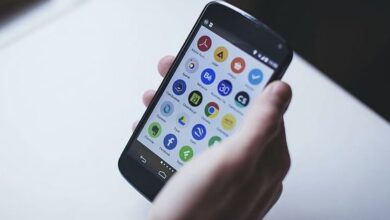
The Nokia 3210, released in 1999, stands proudly amongst these legends. While it may seem archaic compared to today’s sleek smartphones, the 3210 wasn’t just a phone; it was a cultural phenomenon, a symbol of durability, and a testament to the power of simplicity.
The 3210’s defining characteristic was its legendary build quality. Crafted from near-indestructible polycarbonate, it could withstand drops, bumps, and even the occasional dunk in water – feats that would leave today’s glass-backed smartphones whimpering for repairs.
This ruggedness wasn’t just accidental; it was a deliberate design choice by Nokia, a company known for its focus on engineering excellence. The Nokia 3210 was a phone built to last, and last it did.
Stories abound of these phones surviving years of abuse, passed down through generations, a testament to their enduring resilience. In an age of planned obsolescence, the 3210 represented a refreshing commitment to longevity.
In a world saturated with complex features and ever-expanding app stores, the 3210 offered a refreshing simplicity. It wasn’t a multimedia powerhouse; it was a phone, designed primarily for making and receiving calls, sending text messages (SMS), and playing the iconic game, Snake.
This uncluttered approach resonated with users. Without the distractions of social media and endless notifications, the 3210 fostered a more mindful approach to communication.
Conversations were focused, messages were concise, and the battery life, unburdened by power-hungry apps, stretched for days. The 3210 reminded us that a phone’s core purpose is communication, not entertainment.
The 3210’s affordability played a pivotal role in its global success. Unlike its high-end competitors, it was accessible to a wider audience, making mobile communication a reality for millions across the globe. This democratization of mobile technology fostered a sense of connection, allowing people to stay in touch with friends and family irrespective of location.
Students used it to stay connected with classmates, parents coordinated with their children, and businesses found a reliable tool for communication. The Nokia 3210 wasn’t just a phone; it was a bridge, connecting people in ways previously unimaginable.
The 3210 transcended its role as a communication tool, becoming a cultural icon. Its instantly recognizable design, with the distinctive blue backlight and chunky antenna, was a ubiquitous presence in the late 90s and early 2000s.
The addictive game of Snake became a pop-culture phenomenon, a universal symbol of mobile gaming’s early days. The phone even found its way into movies and television shows, solidifying its place in popular culture. The 3210 wasn’t just a device; it was a symbol of a time, a reminder of a simpler, more connected era.
The 3210’s legacy extends beyond its initial success. Even today, in the age of smartphones with gigabytes of RAM and multi-core processors, the Nokia 3210 retains a certain allure.
Pre-owned 3210s continue to be bought and sold online, a testament to their enduring appeal. Manufacturers have even capitalized on this nostalgia, releasing modernized versions of the classic phone.
The enduring popularity of the Nokia 3210 speaks volumes about its impact. It’s a reminder that sometimes, the simplest designs hold the most value.
The Nokia 3210 wasn’t just a phone; it was a symbol of an era, a testament to the power of simplicity and durability. It offered a reliable communication tool, a gateway to a more connected world, and a source of endless entertainment with Snake.
In an age of fleeting trends and planned obsolescence, the 3210 stands as a reminder of the enduring value of well-crafted technology.
So, the next time you pick up your smartphone, take a moment to appreciate the legacy of the Nokia 3210, the ultimate mobile phone.






